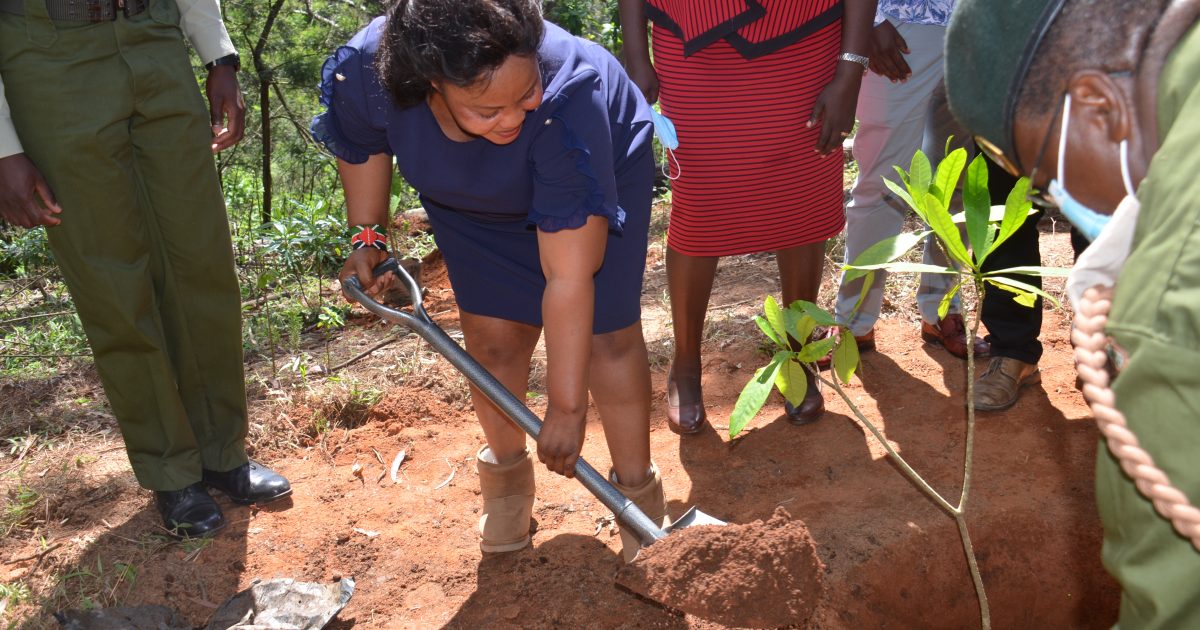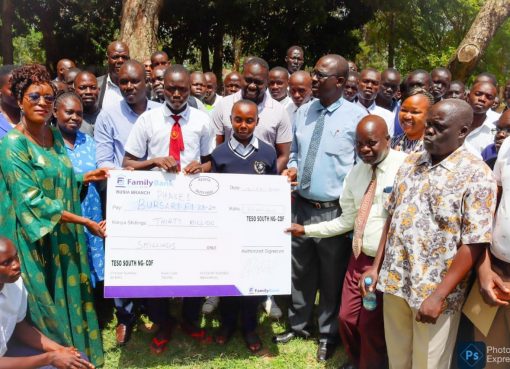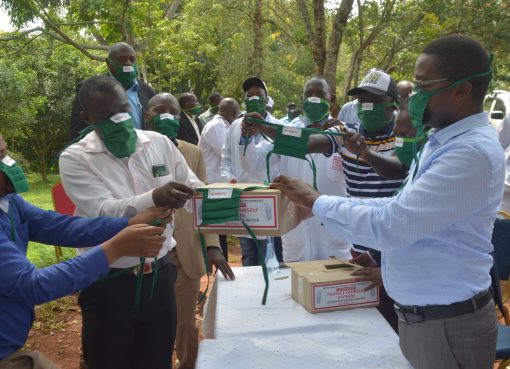The government through the Regional Development Authorities intends to plant and grow 50 million trees as part of an ongoing programme aimed at rehabilitating degraded water towers that form a critical lifeline for national parks and other protected areas.
The Principal Secretary (PS) State Department for Regional and Northern Corridor Development Dr. Margaret Mwakima said that a multi-agency approach will be adopted to actualize the plans of planting the large number of trees across the country.
Speaking at Irizi Forest in Wundanyi Sunday, the PS noted that the country was yet to meet the 10 per cent threshold tree cover as stipulated in the constitution.
She added that the Regional Development Authorities will partner with Kenya Forest Service (KFS) and Kenya Forestry Research Institute (KEFRI) to ensure that the trees are planted and nurtured to maturity.

“We have made a goal of planting the trees and ensuring that they will grow to support the 10 percent tree cover,” she said.
Regional and Northern Corridor Development PS Margaret Mwakima leading forest officers and other national government officials along a path inside Irizi forest where she presided over a tree planting exercise.
Dr. Mwakima noted that there was need to intensify conservation and protection of water towers which were vital sources of sustenance for national and game parks in Kenya. She warned that the destruction of water towers and degradation of forests would eventually affect the national parks and pose a threat to survival of plants and wild animals in those protected areas.
Already, several regional development authorities have established tree nurseries to achieve this 50-million tree vision.
Kerio Valley Development Authority has 13 tree nurseries while Lake Basin Development Authority has 15 nurseries. Ewaso Nyiro Development Authority has six while Tana Athi has over 40 nurseries. Ewaso Nyiro South Development Authority has nurseries for bamboo while Coast Development Authority has nurseries for seedlings including mangrove seedlings.
The seedlings in the nurseries include indigenous and fruit trees like mangoes and nuts.
The PS singled out Taita Hills whose streams and rivers drained into Tsavo East National Park. Mzima Springs, another marine resource vital to survival of Tsavo West National Park, originates from Chyullu Hills where human activities have vastly depleted tree cover.
Other officials present include Tana and Athi River Development Authority (TARDA) Environmental Manager Peter

Muli and Simon Loktari, Coast Development Authority’s Environmental Manager.
The PS further called for stakeholders in the tourism sector to introduce additional tourism packages that will loop in the local communities. She noted that most marketed tourism packages were beach and wildlife.
She stated that Taita Hills had vast tourism potential that were still largely underexploited. She cited the sprawling hills, the towering rocks, the forests and the unique culture as some of the elements that can attract tourists who visit Tsavo National Park and Amboseli National Park.
“Tourists visit Tsavo and Amboseli yet they bypass Taita Hills. The region has vast potential for novel activities like rock climbing, bird-watching and nature walks,” she said.
The PS added that Taita Hills were home to very rare species of birds including Taita Thrush and Taita Apalis that were critically endangered following degradation of forests.
By Wagema Mwangi





